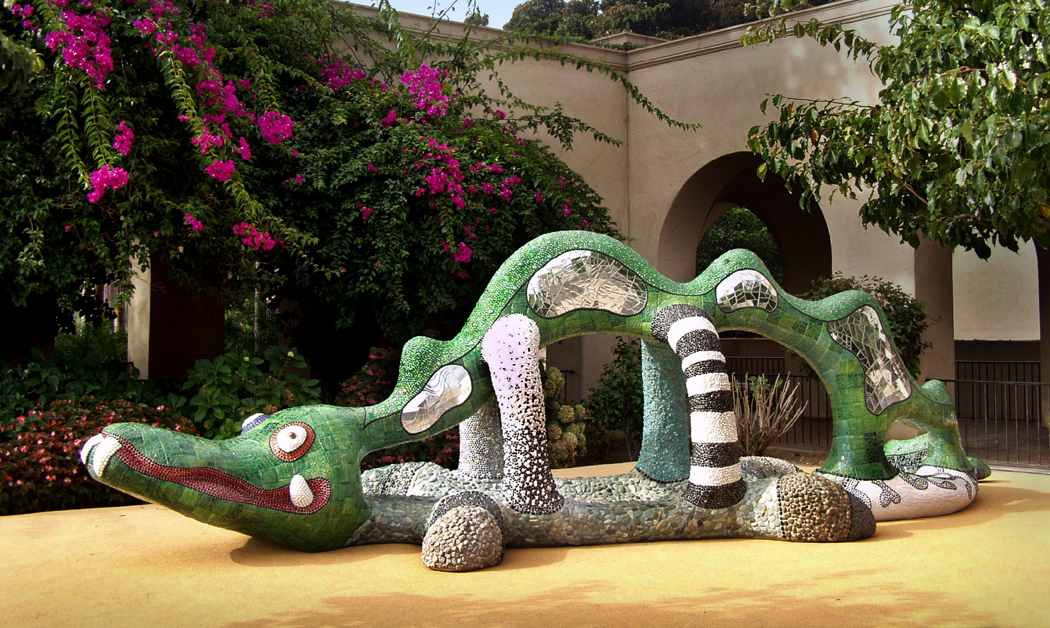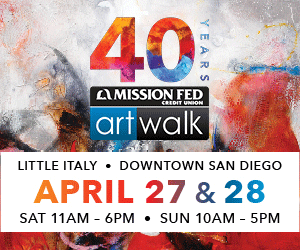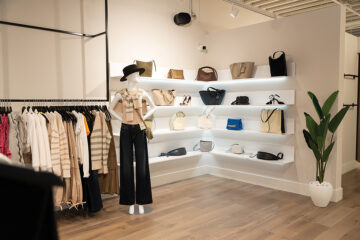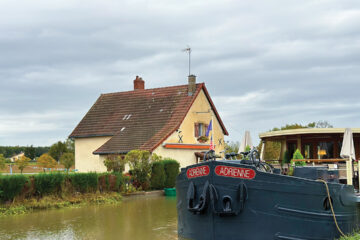Mingei International Museum’s transformation begins its final phase
The renovation was recently recognized by the San Diego Chapter of the American Institute of Architects for its innovation and emphasis on sustainability.

Have you ever used a tool in the kitchen, garden, or workshop that did its job so well and felt so good in your hand you looked forward to using it again? That is the kind of experience and the kind of objects celebrated at Mingei International Museum in Balboa Park. Things that are “wonderful to handle and hold,” says executive director Rob Sidner.
Though referred to by some as the folk art museum, the word mingei actually means “art of the people” and was coined in the 1920s by the Japanese philosopher Dr. Sōetsu Yanagi who combined two words for the purpose: “min” meaning “the people” and “gei” meaning “art.” As a young man living in Korea, Yanagi was taken by the pottery he saw everywhere around him — not the ceremonial objects but the everyday ware used for everything from teacups to kimchi jars, items people had been using and making with little consideration beyond function for more than 500 years.
The pieces were modest and even rustic in their adornment but brilliant in the simplicity of their design, and Yanagi came to view them as among the most beautiful of all human-made objects. In terms of what they revealed about human existence, he considered them equal to the renowned scroll paintings of the East and Renaissance works of the West, but with one important difference — the makers were unknown.
Though these items play a central role in our daily lives, they are the product of anonymous artisans and craftsmen creating not for the greatness of a ruler or religious belief but for everyday use. As Yanagi writes in his seminal work, The Unknown Craftsman, “…while the high level of culture of any country can be found in its fine arts, it is also vital that we should be able to examine and enjoy the proofs of the culture of the great mass of the people, which we call folk art. The former are made by a few for the few, but the latter, made by the many for many, are a truer test.”
That is what Yanagi meant by “art of the people,” and nowhere is that principle more apparent than in the $52 million renovation project transforming the museum’s entire plaza level into a public “living room” in the heart of the park.
Mingei is located on the southwest corner of the Plaza de Panama in the House of Charm, one of the original structures from the 1915 Panama-California Exposition. It is a building it shares with the San Diego Art Institute and the Old Globe, which maintains rehearsal space in the lower level, and Sidner is quick to thank both for their patience and support during the renovation.
The Mingei section has been closed since the fall of 2018, and for the past year, the museum has been staging exhibits at various venues throughout the region, something it will continue to do through 2020. But with 70 percent of the necessary funding now secured, the project has entered its final phase, and all involved are looking forward to the museum’s grand reopening in mid-2021 and the start of what Sidner calls radical hospitality to community: “Mingei represents art of all cultures and people,” he explains. “We wanted to be physically more expressive of that.”
Mingei hosts more than 100,000 visitors a year and as Sidner points out, museums are no longer mere repositories. They are gathering places, looking to engage with the community, and not only will the plaza level be free and open to the public, it will offer seating and dining options among displays featuring selections from the museum collection.
The renovation, which is being overseen by Jennifer Luce, principal of the San Diego architectural firm Luce et Studio, was recently recognized by the San Diego Chapter of the American Institute of Architects for its innovation and emphasis on sustainability.
“It’s an important moment to aspire to a big gesture of change,” says Luce. “This project with Mingei is a perfect confluence — it’s about the park, the craft of fine art, and good design.”
The plans also include restored terraces that have not been open to the public in decades and a grand new staircase leading to the building’s historic bell tower. No longer a parking lot, the Plaza de Panama is once again becoming the central square it was intended to be and adding to that experience the plaza level at Mingei will offer several new entrances, including one leading to another of the park’s crown jewels, the magnificent Alcazar Garden.
It is a project that will enhance not only Mingei, but the park and city, and both State Assemblymember Todd Gloria and City Councilmember Chris Ward were on hand for the ceremony inaugurating the final phase.
“I’m impressed with Mingei’s vision and courage in embarking on a transformational project that embraces the community and increases access to its collections for everyone, said Assemblymember Gloria. “By going big, Mingei reflects the audacity of Balboa Park’s founders in providing enticing public spaces open to all.”
Councilmember Ward noted, “Mingei, along with the other cultural institutions here in the Park and around our region, plays a vital role in our community for people of all ages and backgrounds. As a parent I know the importance of arts education, and how important exposure to the arts is during formative years.”
For his part, Sidner spoke of the museum’s ability to carry out its mission in meaningful new ways. “Since its founding more than 40 years ago, Mingei has always shared and celebrated art of the people. Soon it will have a newly designed space for all of the people.”
In referring to the museum’s more than four decades, Sidner is quick to bring up founder Martha Longenecker, with whom he worked for 13 years. A professor of art at San Diego State University, Longenecker studied pottery-making in Japan with Shoji Hamada (1894-1978) and Tatsuzo Shimaoka (1919-2007), leaders of the Mingei Association of Japan. Following Yanagi’s time in Korea, he returned to Japan and developed a following sharing and applying his insights. Longenecker met and studied with Yanagi personally in 1952 and was inspired by her experiences in Japan to carry the vision of mingei to America.
Although the notion of mingei may now seem obvious in view of artists like Duchamp and Warhol who had us look at our own everyday products, it was not at all common in the 1960s and ’70s when Longenecker first began teaching and sharing the ideas of mingei here in San Diego. Indeed, while the idea had crossed her mind as a long-term possibility, she was in no way prepared when it was first suggested she found a museum.
Longenecker had arranged for her teachers Mr. Hamada and Mr. Shimaoka to visit the United States to demonstrate and lecture on their techniques. With the encouragement of her husband who provided seed money, she also incorporated Mingei as a nonprofit in 1974. Still, a nonprofit is not a museum, but only two years later the organization was offered an unprecedented gift from Ernest W. Hahn and Associates, the firm leading the then soon-to-be-completed University Towne Centre. That gift was a free 20-year lease on 6,000 square feet of space, an offer she couldn’t refuse.
Longenecker oversaw the design and construction of the original museum, which opened at UTC in 1978, and she continued as director until 2005. The first institution in the country dedicated to mingei, the museum was so successful that among Longenecker’s greatest responsibilities was overseeing the museum’s move when the lease ended, a process that led the museum to its current 41,000-square-foot space in the House of Charm.
That move took place in 1996, a stupendous upgrade in terms of space, but as mentioned, the building dates back more than a century, and after 22 years there were dozens of issues both major and minor that needed repair or replacement. It was Luce’s idea not to look at them as discreet projects, but to think of an entire renovation that would transform the way the museum functioned, something the board had considered a decade earlier. At that time, however, it was not ready to take on a major capital campaign, but in 2018 this time the board voted right away to make the attempt.
“Projects like this can only happen with the investment of the community,” said Mingei trustee and capital campaign co-chair John Seiber. “Generous philanthropy has been essential to realizing this exciting vision.”
Major donors include lead gifts from Margaret A. Cargill Philanthropies and Frances Hamilton White, and as well as significant gifts from Lucille and Ron Neeley, The Donald C. and Elizabeth M. Dickinson Foundation, the Elizabeth and Walter Smoyer Family Trust, Price Philanthropies, Joan and Irwin Jacobs, and The Legler Benbough Foundation. In total, more than 300 donors have supported the project, including the museum’s entire board of trustees, and Seiber announced the kickoff of a $15 million public campaign to complete the project funding.
Nevertheless, even with the transformation, the star at Mingei will remain its stunning collection. With more than 26,000 objects from 141 countries, the museum’s rapidly growing collection — now accessible online — includes not only folk works, but the museum in fact collects and displays pieces from three related but distinct categories: folk art, craft, and design.
Yanagi’s teachings awakened people to the essential need to make and use objects that are unfragmented expressions of head, heart, and hands, and there are craftspeople and artisans who continue to create in this way today. And so, while the museum collection includes everything from 13th century Iranian pottery to 16th century African beads, it also contains examples of 20th century design and current artisans at the top of their craft, working in wood, glass, ceramics, or combinations thereof. There are even some manufactured items, objects that in our time serve in the same way as the teacups Yanagi drank from in Korea.
Not surprisingly, the vast array of objects are organized in a variety of ways as well. Some of the categories are straightforward such as beads, jewelry, and textiles; others are grouped by purpose or geography such as “Form Follows Function,” “American Quilts,” and “Africa Rocks.” At the core of the collection there are also more than 3,000 pieces from Japan, some dating to the 14th century.
Along with its exhibits, the museum provides diverse educational programs, hosting more than 5,000 students a year, primarily K-5, but high school and college students as well. With support from Patrons of the Prado, Mingei provides free transportation to all Title 1 schools, while in a separate program staff artists provide arts education to third graders at area schools. The museum has worked hard to continue these efforts during the renovation, along with its schedule of regional exhibits, and one of these is its monthly Family Sunday program, which it has been hosting at area libraries. This month at Logan Heights branch, staff members will be highlighting the symbolic string art of the Huichol people of Mexico, while next month they’ll be celebrating Black History Month at the City Heights/Weingart Library. Both will feature a 30-minute interactive story time designed for art-loving children and families of all ages. Other events include a pop-up exhibit at The New Children’s Museum in February, and the museum shop will also be open throughout the renovation at Liberty Station, where the beloved sculpture Nikigator by the late French-American artist Niki de Saint Phalle is also on display.
It is less than a hundred years since Dr. Yanagi coined the word and opened the first museum dedicated to mingei in a small building in the old palace in Seoul, Korea in 1921. The fact that some 50 years later Longenecker opened the first museum in America dedicated to mingei here in San Diego is a testament not only to her, but to the powerful artistic tradition that has been a part of the city and Balboa Park from the start. In recognition of her contribution to transcultural artistic understanding, Longenecker was awarded the Order of the Rising Sun by the Emperor of Japan in 2003.
Lead architect Luce describes the Mingei as “one of the most authentic and humble institutions in the city.” Nevertheless it is a champion of big ideas and big plans, that will further cement Balboa Park’s place as one of the world’s great cultural hubs. mingei.org














Comments